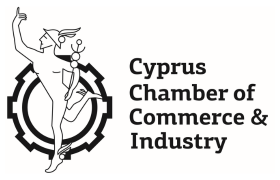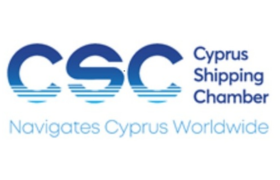Unlike other automatic exchange of information regimes, where reporting is annual using year-end data, DAC6 imposes an everlasting duty to assess, record and report reportable cross-border arrangements.
The 31st of January 2022 marked the first reporting milestone for complying with the DAC6 rules in Cyprus. While this perhaps allowed Cyprus based intermediaries and relevant taxpayers to manage the backlog of the reportable cross border arrangements of transitional period (and of the “grace period”) it needs to be kept in mind that DAC6 compliance has now entered a “live” period. Compliance efforts should therefore form part of the “business as usual” model of every organisation. Intermediaries and taxpayers should therefore design and implement an equally robust and future proof compliance framework in order to be able to comply with the evolving reporting deadlines. Such framework should take into consideration the identification, assessment and reporting of reportable cross border arrangements but also account for the need to document all compliance efforts as well as communicating the outcomes to clients and/or other intermediaries and advisors. In this article we will refer to these components and refer to practical ways in which the framework may be achieved.
First of all, it is necessary to have a look in the relevant triggering events for reporting. Following the 31st of January deadline, the timeline for reporting is not predetermined and will crystallise with reference to the applicable triggering events.
For primary intermediaries, there is a requirement file a relevant report for a reportable cross border arrangement within 30 days of the earliest of: the day after the arrangement is made available for implementation, the day after the arrangement is ready for implementation.
The reporting obligations of secondary intermediaries depend on the aforementioned triggering events but there is an additional one. Secondary intermediaries are required to file a report within a period of 30 days beginning on the day after the triggering events mentioned above but also from the day after they provide aid, assistance or advice in respect of the arrangement; whichever takes place earlier. The point at which aid, assistance or advice should be treated as ‘provided’ will depend on the facts of the case. If an arrangement is considered to be a marketable arrangement, then there is an obligation for intermediaries to file prescribed information every three months.
Given the challenging deadlines it is therefore important for organisations to be in a position to proactively assess the arising reporting obligations that may arise. Organisations will need to be in a position to identify potentially reportable arrangements. When faced with a vast number of arrangements, intermediaries and relevant taxpayers should be able to scope-in arrangements within the temporal and cross border scope of the DAC6 legislation.
Moreover, organisations will be more efficient in their compliance journey if they are able to spot which types of arrangements may trigger specific hallmarks. This is not the same as performing a proper DAC6 analysis of an arrangement, but it is rather a “quick win” for filtering potentially reportable arrangements which deserve additional input and assessment. This competency is created by having the appropriate awareness and understanding of the rules within the organisation. Being a new and complex piece of legislation, and often surrounded with common misconceptions, it is recommended to have the requisite knowledge in-house through training and workshops that will lay the foundations for meeting all future obligations.
The next obvious milestone will be for organisations to assess the reportable arrangements, based on the relevant hallmarks. Other than the DAC6 legislation, the Ministerial Decree (Guidelines) also forms an interpretative source for the application of the DAC6 rules. The Cypriot tax authorities are also expected to issue a series of Frequently Asked Questions that will cover a number of practical issues that rose to the surface during the transitional (and “grace”) period. The exact input and resources that is needed from each organisation will depend on the level of technical knowledge created during the awareness and knowledge enhancement phase. Furthermore, organisations should consider whether the use of technology enablers may assist the assessment (and not only the reporting) of reportable cross border arrangements.
The recently issued Circular 55, introduces an express obligation to intermediaries and relevant taxpayers alike, to maintain books and records for all cross-border arrangements for a period of six years. This essentially means that DAC6 compliance does not only entail a reporting obligation but also documentation obligations that need to be observed. This in practice means that a repository of cross border arrangements needs to be maintained. Such repository may also be part of the overall audit trail for compliance, by incorporating the rationale, considerations and supporting documentation for treating a cross border arrangement as reportable or not.
Another constituent element relates to communication, which is a multileveled initiative. As far as internal communication is concerned, setting the right tone and the appetite for compliance is of outmost importance as this might affect the mindset of the various internal resources and impact the overall compliance of an organisation. Secondly, client communication is of the essence. A communication strategy that raises awareness and “educates” clients and/or stakeholders might save organisations from lengthy, time consuming and costly discussions in the future. The last element of an impactful communication strategy relates to intermediary management and the so called “pushback” where other intermediaries being aware of at least the same information may report and organisations can rely on such filing. It is therefore crucial to identify and map down all such other intermediaries, which may differ from arrangement to arrangement.
Unlike other automatic exchange of information regimes, where reporting is annual using year-end data, DAC6 imposes an everlasting duty to assess, record and report reportable cross-border arrangements. Both monetary and reputational repercussions in failure to meet the arising obligations can be sizeable. At the same time, organisations should also consider customer experience matters. Organisations therefore need to be vigilant and embed DAC6 in their day-to-day business model to ensure a seamless compliance journey.
Panayiotis Tziongouros
Director, International & Transaction Tax Services
EY Cyprus













